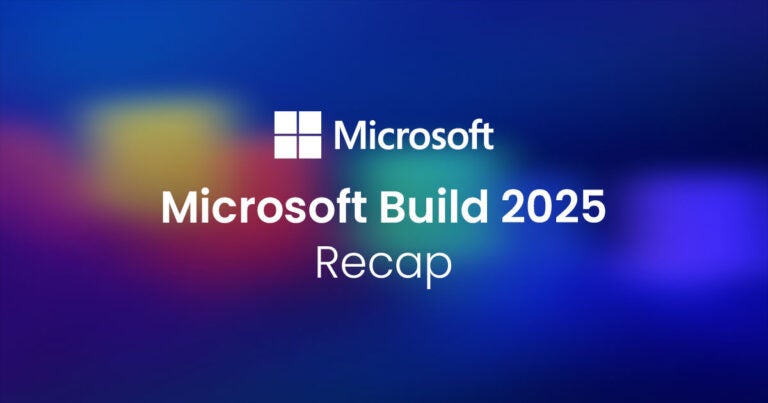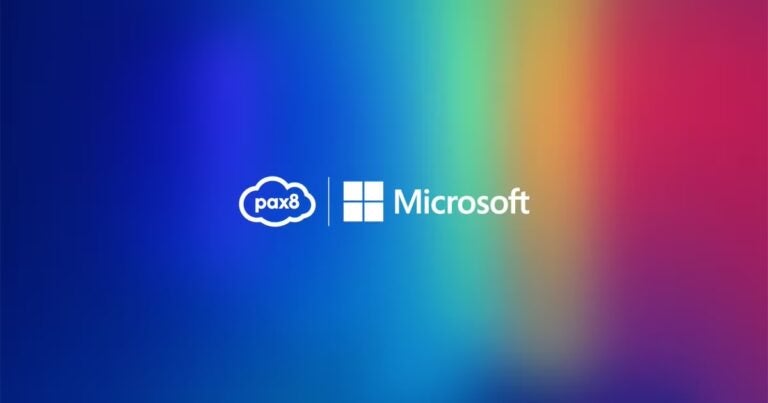Strategies and tools for a healthier, happier workplace.
As we enter another year of the pandemic, the emergence of hybrid work has amplified the importance of mental health in the workplace. Employees face continued social isolation, uncertainty about the future, and frequently changing work conditions — all of which can have a significant impact. During the 2021 Ignite Conference, Microsoft shared that from 2019 before the pandemic to October 2021, the number of Americans experiencing an anxiety disorder rose from 8% to 35%, with spikes as high as 45%.
Now more than ever we need to break the silence around mental health. Here at Pax8, we are taking the initiative to accommodate employees through the challenges of remote and hybrid work. As an organization, we are educating ourselves so we can find the best actions to promote awareness and create a supportive culture.
Below are some actions you can take to promote mental health throughout your work community, as well as resources from Microsoft that can help your team achieve a better work-life balance.
What to Keep in Mind
Mental health exists on a spectrum.
As you take steps to address mental health in the workplace, it’s important to remember that everyone’s journey is unique. Below are some categories of mental distress that can impact employees in different ways:
- Situational: Stress and anxiety can spike due to specific situations, such as work deadlines.
- Temporary: Events such as family illness can cause strain over extended periods of time.
- Permanent: Chronic conditions, such as generalized anxiety disorder, are ongoing.
Language is a pathway to inclusion.
To be supportive and diminish stigma, it is crucial to use accurate language in discussions.
Never use a mental health condition to describe anyone’s behavior, such as saying “I’m so OCD about keeping my desk neat”. Using diagnostic terms casually and inaccurately reinforces misconceptions and trivializes the experience of people with those conditions.
Don’t downplay people’s experiences. Saying things like, “It’s not as bad as you think,” or “It’s all in your head,” is dismissive of the challenges they face. Show support for others and understand that everyone experiences emotions and situations differently.
Mental health is prevalent in the workplace and affects companies globally.
Every company must keep mental health top of mind as it impacts employee quality of life, company morale, and productivity. At Ignite 2021, Microsoft shared that anxiety and depression accounted for $1 trillion in lost revenue — and that was prior to the pandemic. Since then, rates of anxiety and depression have only increased across the globe. Microsoft also reported that while 20% of lost productivity was due to absenteeism, 80% was associated with presenteeism, which is when employees are at work but not fully functioning due to illness or distress.
3 Strategies to Improve Mental Health in the Hybrid Workplace
Community is KEY!
Find ways to create a supportive and welcoming work environment, whether virtual or in-person. Humans are inevitably social people, so create opportunities for interactions in the workplace by facilitating events such as virtual happy hours or catching up with co-workers during virtual coffee chats. It is also important to create an open environment where employees feel comfortable sharing their struggles when they need help. A supportive culture creates a sense of belonging and community that will strengthen individuals and teams.
Find what works for you.
Emphasize individuality in the way you and your employees work. Encourage your team to understand their personal style and use the meeting techniques that work best for their mental wellbeing. Allow employees to block off times in their calendar for focused work during which they won’t be interrupted by chats or meetings. Even small things like using emojis and gifs within online team chats can express personality and promote a positive energy throughout your organization.
Unplug from work.
With the accessibility of collaboration tools such as Outlook and Teams from mobile devices, it is easier than ever to stay connected. This constant connection is great for productivity but can be detrimental to work-life balance. A current study Microsoft shared at Ignite 2021 shows that 70% of professionals don’t fully unplug from work. It was also found that 87% of emails are read after hours and 30% of individuals around the world check their inboxes before getting out of bed in the morning.
Burnout is real, so it is important to take personal time to decompress from work. Here at Pax8, we encourage employees to take screen breaks for walks or yoga or whatever makes them happy! Taking time away throughout the day, along with taking vacation days throughout the year, is key to unplugging from work and regaining mental and social capacity.
The number one work-life disruptor is “thinking about work” — let’s take a stance this year to unplug and change this statistic! Giving employees the authority to set boundaries between work and personal time with Do Not Disturb functions and out of office statuses can help establish genuine time off.
Microsoft Resources to Promote a Healthy Work-Life Balance
Viva Insights (in Microsoft Teams): Gain insights into your work behavior.
Viva Insights is an app in Microsoft Teams that provides personalized recommendations for building healthier work habits. These insights can help you:
- Protect your time by scheduling focus time and starting a “virtual commute” to wrap up your day.
- Reflect with check-ins on your wellbeing.
- Unplug during the day with an occasional “breathing break.”
- Cheer on your colleagues by sending a praise message.
- Boost your mindfulness and relax with a guided meditation and focus music from Headspace.
Daily Briefing Email: Book time for what is important.
Your daily briefing email from Microsoft Viva (previously from Cortana) provides reminders to help protect and manage your time. The adaptive email version includes a section called “What do you want to set aside time for?” to help you plan your week ahead for improved productivity and wellbeing, allowing you to schedule:
- Focus Time: Uses AI to find time on your calendar for uninterrupted work, silencing notifications.
- Catch up on Messages: Sets aside time to catch up on emails and chats.
- Take a Break: Books time on your calendar to disconnect
- Learning: Schedules time for professional development.
Using Technology to Help People
The capabilities of AI-driven tools such as Microsoft Viva can go a long way in helping promote a positive employee experience in the hybrid workplace. However, you have to start with your workplace culture.
First, set a precedent of encouraging employees to take frequent screen breaks, unplug during vacations and holidays, set blocked off time for focused work, and interact socially with colleagues. Then, support this work-life balance culture with tools that provide insights alongside automated scheduling and notification features to enable your employees to do so effectively.
Want to learn about other ways technology can be leveraged to empower people? Click the link below to learn about Microsoft’s Tech for Social Impact program, the Pax8 Rural Empowerment Program, and a highlight of our first TSI initiative.





